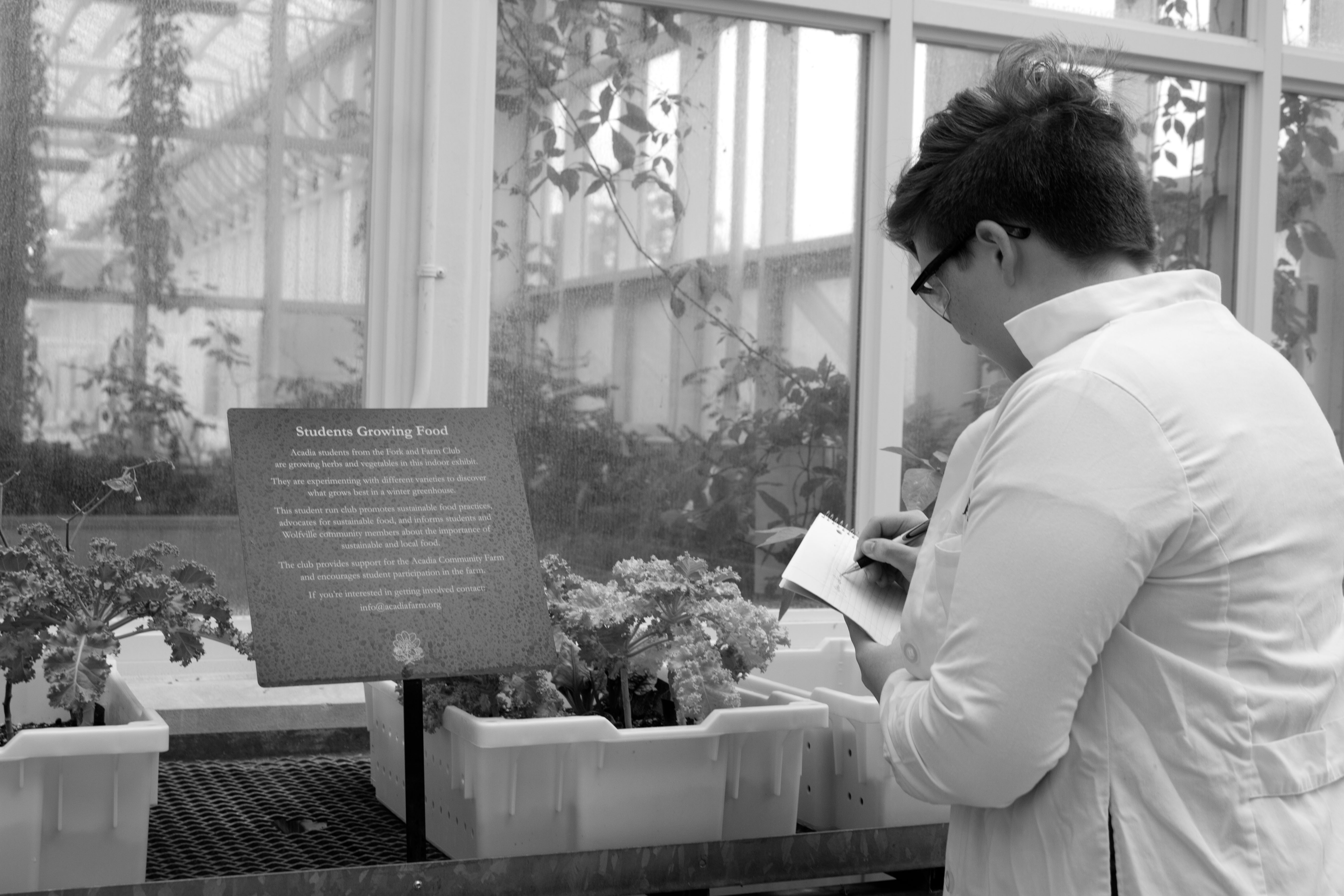Acadia’s Biology Research Gong Show recently took place on October 23rd, where professors gave short PowerPoint presentations outlining their current research projects. Research gong shows are a great way for students to learn about the research being conducted within their department, and opportunities to get involved in. If the presenter goes over the 3-minute time limit, they are interrupted with the ring of a gong (or the hammering of wooden spoons against a frying pan). Biology and non-biology students alike may be interested in the wide variety of research projects underway at Acadia:
- Dr. Todd Smith started off the show by introducing his research on parasites. His work is currently focused on studying the relationship between malaria parasites and their hosts. His lab investigates the co-evolution of parasites that target mosquitoes, frogs, and snakes, with a specific interest in host immune responses. Dr. Smith is currently teaching BIOL 2053 (Microbial Biodiversity), BIOL 3123 (Parasitology) and BIOL 3583 (Eukaryotic Microbiology).
- Next up was Dr. Glenys Gibson, whose research revolves around evolutionary development. Her lab is focused on marine invertebrates and the influence of environmental factors on their development. Her work includes analyzing the effects of microplastics on tissue growth – research that is undeniably pertinent, as we observe an increase in the amount of plastic present in the natural environment. Dr. Gibson is currently teaching BIOL 3153 (Principles of Development), BIOL 3163 (Comparative Embryology), and BIOL 3423 (Histology 1).
- If you’re a biology student at Acadia, you’re likely already familiar with Dr. Allison Walker’s passion for fungi. She and Acadia’s Fungal Dream Team are currently looking at marine fungi, with many projects on the go, including the restoration of native species in salt marshes, the role of endophytes (organisms that live between plant cells) in algae and seagrass, and the potential uses of fungi, such as the suppression of pathogens. Dr. Walker is currently teaching BIOL 1123 (Organisms & Their Environment II),
BIOL 3663 (Introductory Mycology) and BIOL 2043 (Biodiversity of Plants and Algae). - We’re all too familiar with stress, but Dr. Russell Easy’s research delves deeper into stress and how it affects animals. His lab uses technology like Polymerase Chain Reaction to investigate DNA and proteins, with the goal of identifying biomarkers of stress. The Easy lab looks at a variety of animals, including fish, deer, frogs, and sea stars. Dr. Easy is also the coordinator of the Biology Honours program, and teaches BIOL 2013 (Cell & Molecular Biology), BIOL 3613 (Principles of Genetics), BIOL 3623 (Molecular Genetics & Genomics) and well as the Natural History Field Course on Bon Portage Island, which is an immersive field course offered during the summer.
- If beetles and moths fascinate you, Dr. Kirk Hiller’s research will too! Dr. Hillier’s lab investigates olfactory neuroscience in insects, such as the evolution of pheromone communication between moths. Other projects revolve around conservation and agriculture, including the development of sustainable chemicals for pest management. Dr. Hillier currently teaches BIOL 3883 (Chemical Ecology) and BIOL 4443 (Comparative Animal Physiology)
- Those interested in a career in immunology or medicine will want to know about Dr. Melanie Coombs’ research. Dr. Coombs is currently working to demonstrate that some natural products may actually kill metastatic cancer cells. Her lab is currently investigating PZ-DHA, a compound that has been shown to kill breast cancer cells, and looking whether it also has the ability to kill other cancers, such as colon cancer. Dr. Coombs currently teaches BIOL 2053 (Microbial Biodiversity), BIOL 3553 (Immunology), BIOL 3573 (Applied and Environmental Microbiology), and BIOL 4353 (Pathogenic Microbiology).
- Marine biology is the domain of Dr. Trevor Avery’s lab, with focus on animal residency and biodiversity. Research in his lab involves finding and tagging fish, frogs, and squid; then examining their population dynamics and demographics. The human dimension is also explored in his lab, as his team often conducts social surveys and collaborates with the community. Dr. Avery teaches BIOL 2563 (Marine Biology),
BIOL 4113 (Fish Biology & Fisheries Science), and BIOL 4253 (Applied Statistical Modeling). Dr. Avery is also a fan of statistics and teaches a course for the Math department: MATH 2223/2243 (Statistics for Life Sciences).
Several professors are on sabbatical and were unable to attend the show, but their Honours students stepped up and gave the 3-minute presentations in their place:
- Evolutionary biologist Dr. Don Stewart uses DNA sequencing to explore the molecular evolution of organisms. His team studies the genetics and habitats of animals such as black bears, while also investigating the interesting phenomenon of doubly uniparental inheritance: most animals inherit their mitochondrial genes only from their mother, but some bivalves (like mussels) can get them from their father too.
- Dr. Dave Shutler’s team studies the birds and the bees (and the coyotes). A lot of field work is involved, as his lab observes the parental investment and predation of birds, the diseases of bees, and the ecology of coyotes.
- Dr. Brian Wilson researches neuroendocrinology, and supervises projects on physiological properties of strokes, while studying the hormone relaxin and its ability to reduce resulting tissue damage. Another project looks at the endocannibinoid system, through which THC affects the brain, a research area that is certain to grow with the recent legalization marijuana.
- Plant biologist Dr. Rodger Evans studies floral evolutionary characteristics, as well as plant relationships. One of his current lab projects involves examining the influence of moths on plant development.
As demonstrated by the gong show, Acadia’s biology department is home to many significant research projects. The research outlined here is only a portion of all that is being conducted at the school, so students are likely to find a topic they’ll want to get involved with.




